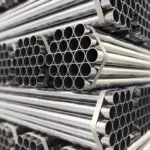What is a CPVC Cement?
CPVC cement is a type of adhesive used to join CPVC pipes and fittings. It is made from a blend of PVC resins, plasticizers, and stabilizers. CPVC cement is available in two forms: regular and heavy-bodied. Regular CPVC cement is used for general purpose applications, while heavy-bodied CPVC cement is used for heavy-duty applications. The main difference between the two is the amount of plasticizer used. Regular CPVC cement has less plasticizer, while heavy-bodied CPVC cement has more.
You can use CPVC Cement on PVC pipe but not the otherwise
. This is a white liquid that forms a bond between two surfaces and is used as an adhesive. CPVC is different from PVC in that it is made with a different plasticizer and is thus not as flexible. It is also more resistant to heat and chemicals.
How PVC and CPVC solvent work?
PVC and CPVC solvents are designed to dissolve and remove PVC and CPVC materials. They are often used in the manufacturing and construction industries to remove PVC and CPVC materials from surfaces and equipment. PVC and CPVC solvents are typically made from a mixture of chemicals, including hydrochloric acid, sulfuric acid, and sodium hydroxide. These solvents can be very dangerous if they are not used properly, so it is important to follow the manufacturer’s instructions carefully.
Benefits of Using CPVC cement
CPVC cement is a type of adhesive that is used to join two pieces of CPVC pipe together. It is a white, thick liquid that is applied to the outside of the pipe and then the two pieces are pushed together and held in place until the cement dries. CPVC cement is very strong and creates a watertight seal between the two pieces of pipe. It is important to use the correct amount of CPVC cement and to follow the manufacturer’s instructions when using it.
CPVC cement is used in a variety of applications including plumbing, irrigation, and pool and spa. It is specifically designed to bond CPVC pipe and fittings and will not work with other types of materials. CPVC cement is available in different formulas depending on the application. It is important to choose the right formula for the job to ensure a strong bond and a watertight seal.
CPVC cement is easy to use and provides a strong, permanent bond. It is an essential part of any CPVC plumbing or irrigation system.
The 5 steps to use CPVC on PVC pipe
If you need to connect a PVC pipe to a CPVC pipe, you can do so using a transition fitting. This type of fitting is specifically designed to connect the two different types of plastic piping together. You’ll need to use a primer and solvent cement to make the connection, but it’s a relatively easy process. Here are the steps you’ll need to follow:
1. Cut the PVC pipe and the CPVC pipe to the correct length, using a PVC cutter or a hacksaw. Make sure that the ends of the pipes are cut at a 90-degree angle.
2. Clean the ends of the pipes with a PVC cleaner or alcohol. This will remove any dirt or debris that could prevent the pipes from bonding together.
Like Us on Facebook!
3. Apply a thin layer of primer to the ends of both the PVC pipe and the CPVC pipe. Use a brush or a rag to apply the primer, and make sure that it’s evenly distributed.
Subscribe Us on YouTube!
4. Apply a thin layer of solvent cement to the ends of both the PVC pipe and the CPVC pipe. Again, use a brush or a rag to apply the cement, and make sure that it’s evenly distributed.
5. Join the PVC pipe and the CPVC



















